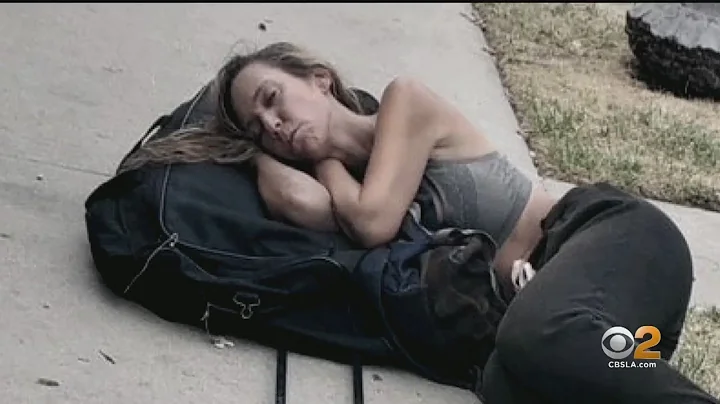In 2019, the Tour de France changed the rules, with teams consisting of 8 riders instead of 9. Tour director Christian Prudhomme responded by citing safety concerns (fewer riders, so less risk of crashes) and the dynamic of the race (fewer riders, so fewer lockdown phases). Justify this decision. The change was first proposed by the International Cycling Union (UCI) in 2017, with other major events such as the Giro and Vuelta following suit.
Although the change is controversial, major sporting events often adjust rules to improve safety, spectacle, fairness or possible financial gain; Formula 1 is a prime example.
As the 109th edition of the Tour de France begins on July 1 in Copenhagen, Denmark, what is the future of La Grande Boucle?
Audience interest slumps – but there’s rebound too
Commentators and spectators at the Tour de France are fascinated by its storied past, with many claiming it was better “before” – there was more uncertainty, more spectacle, Fewer locked games. It's believed that cycling epics of the past were created because technology had yet to replace the human element, and the striking black-and-white images of classic battles drive this idea home. Philosopher Roland Barthes called the Tour de France a "modern myth" and linked it to the importance of collective beliefs established in the past.

French cyclist Raymond Poulidor shakes hands with Belgian Eddy Merckx, winner of the seventh stage of the 1974 Tour de France.
Technology such as radio headsets that relay team managers' orders and components that measure rider power are often blamed for dulling the Tour de France. Ten years ago we began to look at the impact of radio on the course of the game, and the debate is far from over.
Although the Tour's ratings have been steadily declining in recent years, total viewers in 2021 were a record 42.4 million. The establishment of half stages, time bonuses, the introduction of different jerseys, intermediate sprints and other measures have made the competition more dynamic. The winner of the last two sessions is Slovenian driver Tadej Pogacar.
Does this mean these changes will help make the Tour de France more interesting?
The value of the yellow jersey
For the sake of consistency, our analysis will start with the 1969 Tour, when the brand team returned, over 5 years of data.
Over the past 50 years, the average speed of the race has increased (now, just under 41 km/h), while the total distance has decreased. The equipment is also better, the team is more organized and the drivers are more prepared. Proof of this is that the dropout rate at the Tour de France has been falling - more than ever, it's more important than ever that the presence of team members is essential until the end.
The graph below shows the final dropout rate in percentage and the average final speed.

We can also see that the average gap between the final champion and the runner-up has narrowed significantly. The chart below shows the difference between first place and second place and first place and third place over the past 50 years.
Could this be a sign that the race is getting more competitive? One should be wary of this interpretation, as it is the job of the team members who control the game to control the gap while minimizing risk. So, what objective criteria would lead us to consider that the Tour de France is indeed controversial and potentially interesting?

Deliberately putting aside the jersey or stage victory, interest in the game is often associated with the "battle" for the yellow jersey (first place in the time classification). In other words, if control of the yellow jersey is uncertain, there should be greater interest in following the game.
The uncertainty inherent in controlling the yellow jersey is based on two aspects: the strong variability of riders wearing it throughout the race and the weakness of the final gap.
The 2010s, the era of "controlled" tourism
Based on data collected by procyclingstats.com, we looked at the number of different yellow jersey wearers for each tour, the number of days the eventual winner held the jersey, and the number of stages last watched. A series of measurements took place as the yellow jersey changed hands and then, as shown above, the final gap between the top three.
Analysis allowed us to locate and rank 51 Tour de France events since 1969, as shown in the image below. (Note that while American rider Lance Armstrong's seven victories were vacated due to doping, the data has been retained for statistical analysis.)

Tour de France positioning based on the size of the gap and the size of the yellow jersey Variety.
The upper left quadrant (red) corresponds to a strongly dominated tour (large gap and few different yellow jerseys). We call them "lock-in" contests, and they are usually the least interesting. We will find a lot of Tours from the 1970s, under the reign of Belgian champion Eddy Merckx. The last "locked" tour was in 2014, won by Italian Vincenzo Nibali, when several favorites folded.
The upper right quadrant (orange) corresponds to Tours, where the number of riders wearing the yellow jersey varies greatly, but the final gap is large. This is a classic pattern from the 1980s when creating big gaps. These are "open and then closed" tours.
The lower left quadrant (blue) shows the tour, where the final gap is smaller but control of the yellow jersey is higher. These were the "controlled" Tours, a basic trend of the 2010s, with British Sky winning with Bradley Wiggins, Christopher Froome and Geraint Thomas.
Spain's Miguel Indurain's playing pattern in the 1990s is related to this category. With the strength of his team and his dominance in the time trial, the winner does not need to open a big gap. This is a scientifically managed contest in which "marginal gains" prove decisive and the suspense is short-lived.
The lower right quadrant corresponds to the most interesting Tour de France - in our opinion - because of the small margins at the end and the large differences in yellow jersey holders. These include 1983 (Laurent Fignon's first victory, with 20 different stage wins), 1987 (Irish Stephen Roche and his tie with Spanish rival Pedro Delgado), 1989 (with American Greg LeMond narrowly finishing margin win) over Laurent Fignon by 8 seconds) and in 1990 (LeMond also won). The 2019 Tour de France was a surprise with the victory of Colombian Egan Bernal and the combativeness of Frenchman Julian Alaphilippe.
Our results clearly show the emergence of races where the margin is small but the eventual winner emerges early; these "controlled" tours have been dominant in recent times (2010s).
Technology cannot explain everything
Yes, the cycling authorities are right to change the rules of the race to encourage more vibrancy, but the Tours of the "glory days" were not necessarily more exciting. Of course, the narrowing of the gap between the leaders points to a greater control of the race shown in recent Tour de France: the winners did not fail, keeping their opponents at close range. Banning technologies (headphones, power meters , GPS) may make sense, but recent trends resemble those of the 1970s, when such information tools were lacking.
Technology doesn't explain everything, and regulation of team composition seems wiser than banning the use of technology in racing (as was attempted in 2009).
The issue of audience perceptions of race also seems important to better understand the issue.Historically, the Tour has been amplified by written media and then broadcast, which used some game facts to tell the audience something they couldn't see.

In 1970, shortly before the start of stage 15 of the Tour de France, cyclist Eddy Merckx read L’Equipe as fans looked on.
stage now fully covered, camera ratio The pen is more important, a GPS transponder is placed on the bike, and real-time data processing indicates to everyone the precise location of the rider.
In economic theory, uncertainty is based on a lack of information. The viewer is less and less left in a state of uncertainty, which changes his or her perspective on race. Therefore, a moderation effect may occur, suggesting that matches without real fighting are perceived as more boring, while matches with a lot of action are more popular. This effect amplifies the relationship between actual events and the audience's perception of them, and will continue to grow with the technology available to audiences and media.
Therefore, it is more important to modify the rules, possibly in a heuristic way, to encourage the emergence of exciting competition events. It will be interesting to see how the 2022 Tour plays out and see which quadrant it ends up in.








![[LIVE] TOUR DE FRANCE 2022 STAGE 1 COPENHAGEN DENMARK - TIME TRIAL - DayDayNews](https://i.ytimg.com/vi/SqkdNKRQbPA/hqdefault.jpg?sqp=-oaymwEcCOADEI4CSFXyq4qpAw4IARUAAIhCGAFwAcABBg==&rs=AOn4CLAO2Rl-JqT6on6_v5xq9X_hXBM1tw)












